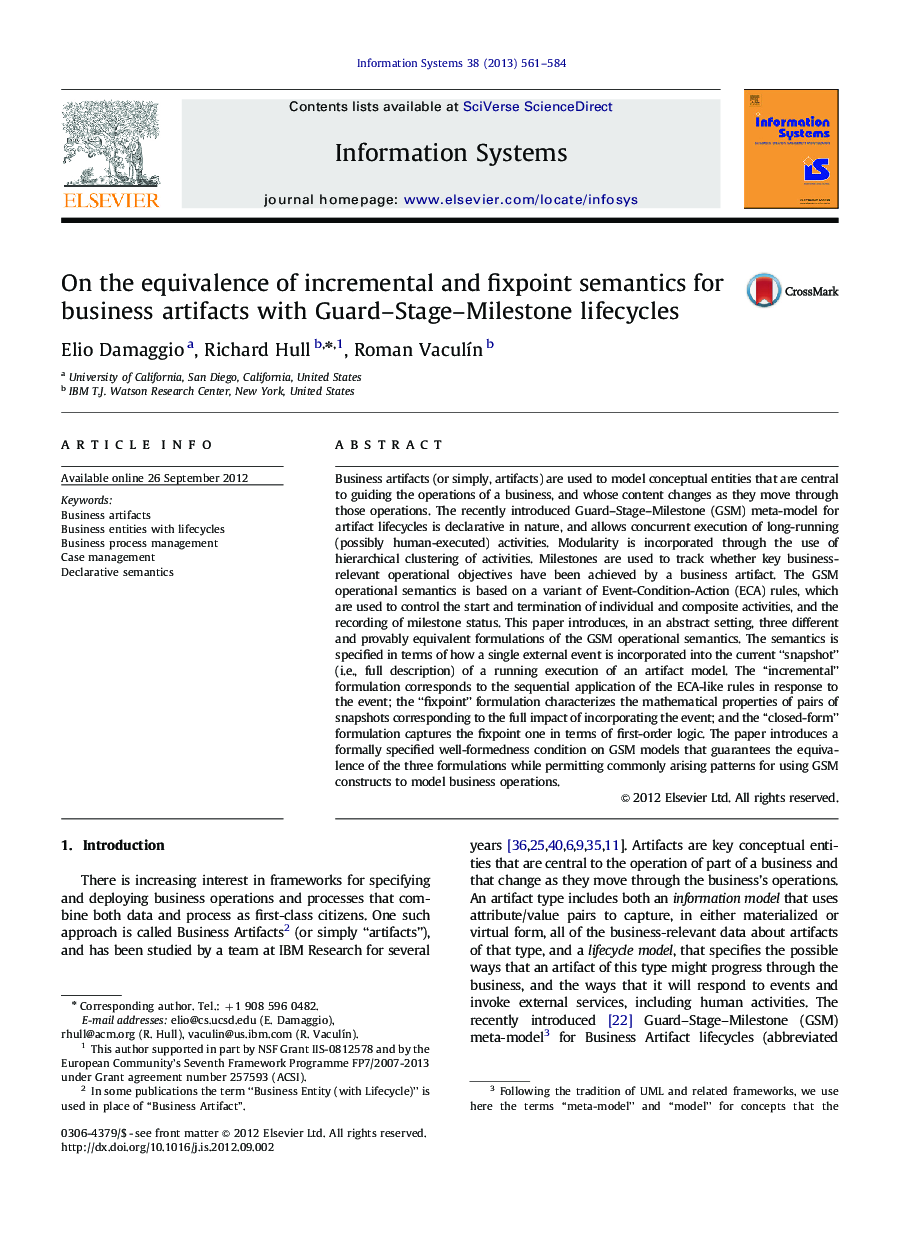| کد مقاله | کد نشریه | سال انتشار | مقاله انگلیسی | نسخه تمام متن |
|---|---|---|---|---|
| 397416 | 671192 | 2013 | 24 صفحه PDF | دانلود رایگان |

Business artifacts (or simply, artifacts) are used to model conceptual entities that are central to guiding the operations of a business, and whose content changes as they move through those operations. The recently introduced Guard–Stage–Milestone (GSM) meta-model for artifact lifecycles is declarative in nature, and allows concurrent execution of long-running (possibly human-executed) activities. Modularity is incorporated through the use of hierarchical clustering of activities. Milestones are used to track whether key business-relevant operational objectives have been achieved by a business artifact. The GSM operational semantics is based on a variant of Event-Condition-Action (ECA) rules, which are used to control the start and termination of individual and composite activities, and the recording of milestone status. This paper introduces, in an abstract setting, three different and provably equivalent formulations of the GSM operational semantics. The semantics is specified in terms of how a single external event is incorporated into the current “snapshot” (i.e., full description) of a running execution of an artifact model. The “incremental” formulation corresponds to the sequential application of the ECA-like rules in response to the event; the “fixpoint” formulation characterizes the mathematical properties of pairs of snapshots corresponding to the full impact of incorporating the event; and the “closed-form” formulation captures the fixpoint one in terms of first-order logic. The paper introduces a formally specified well-formedness condition on GSM models that guarantees the equivalence of the three formulations while permitting commonly arising patterns for using GSM constructs to model business operations.
Journal: Information Systems - Volume 38, Issue 4, June 2013, Pages 561–584